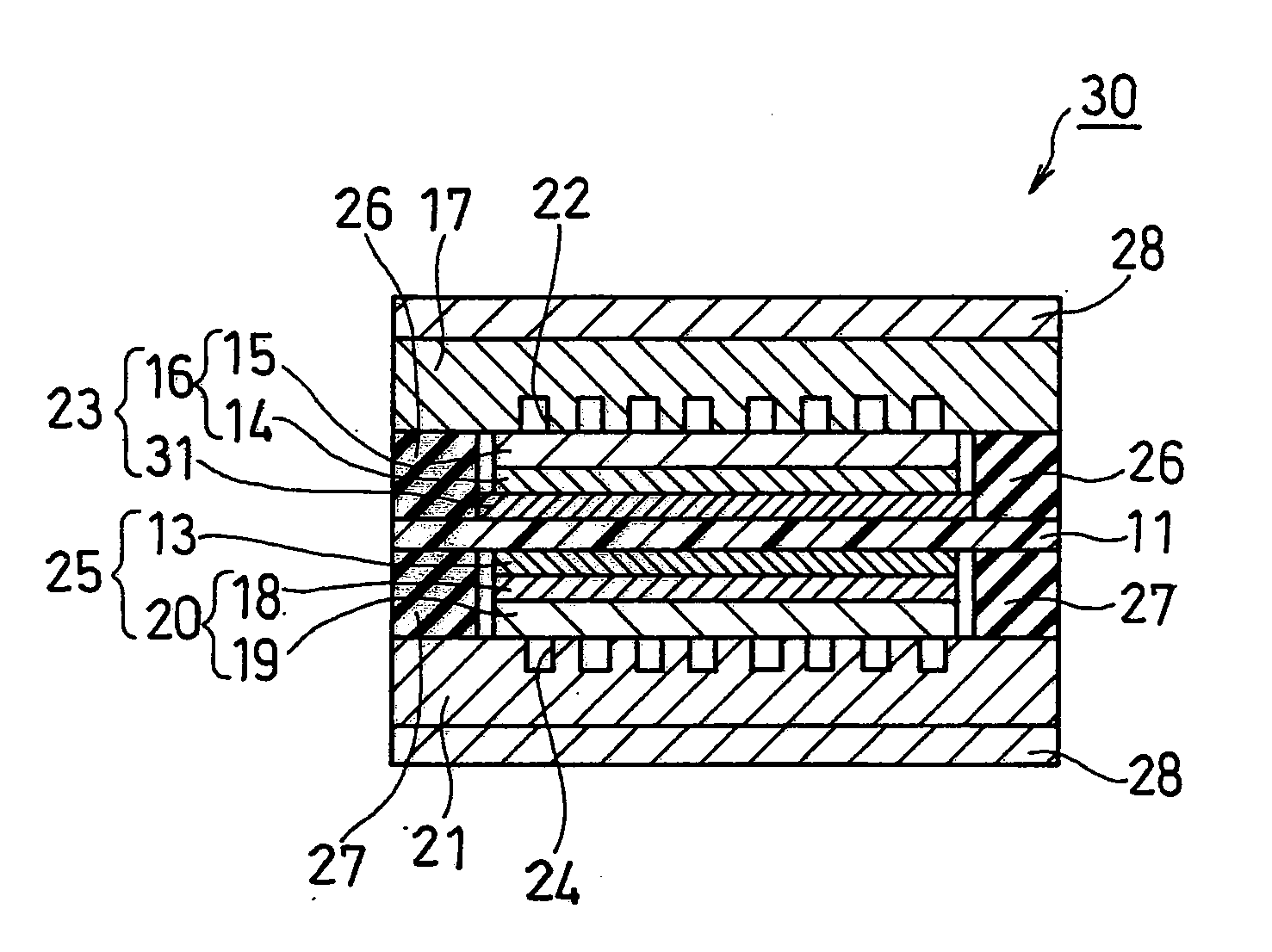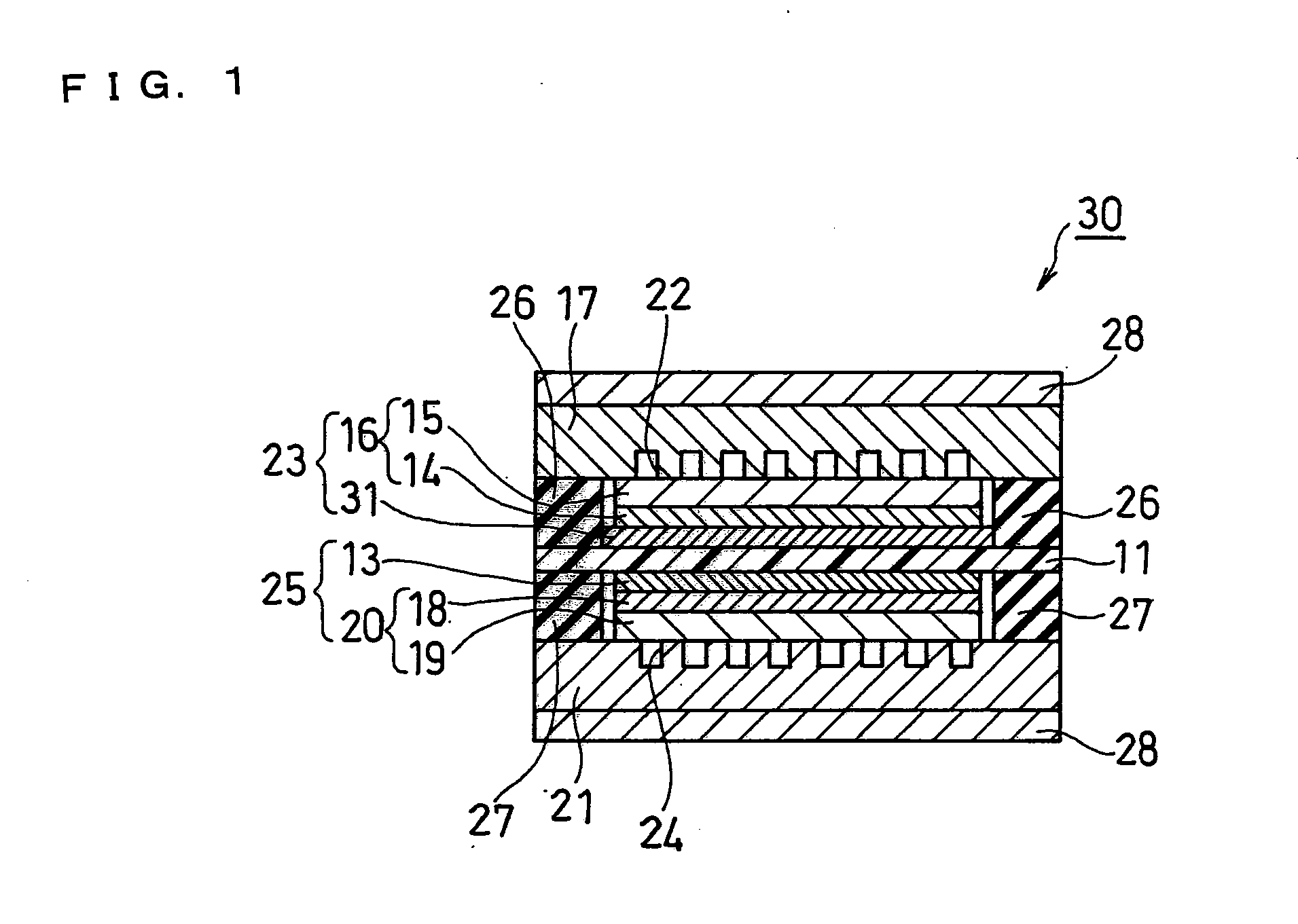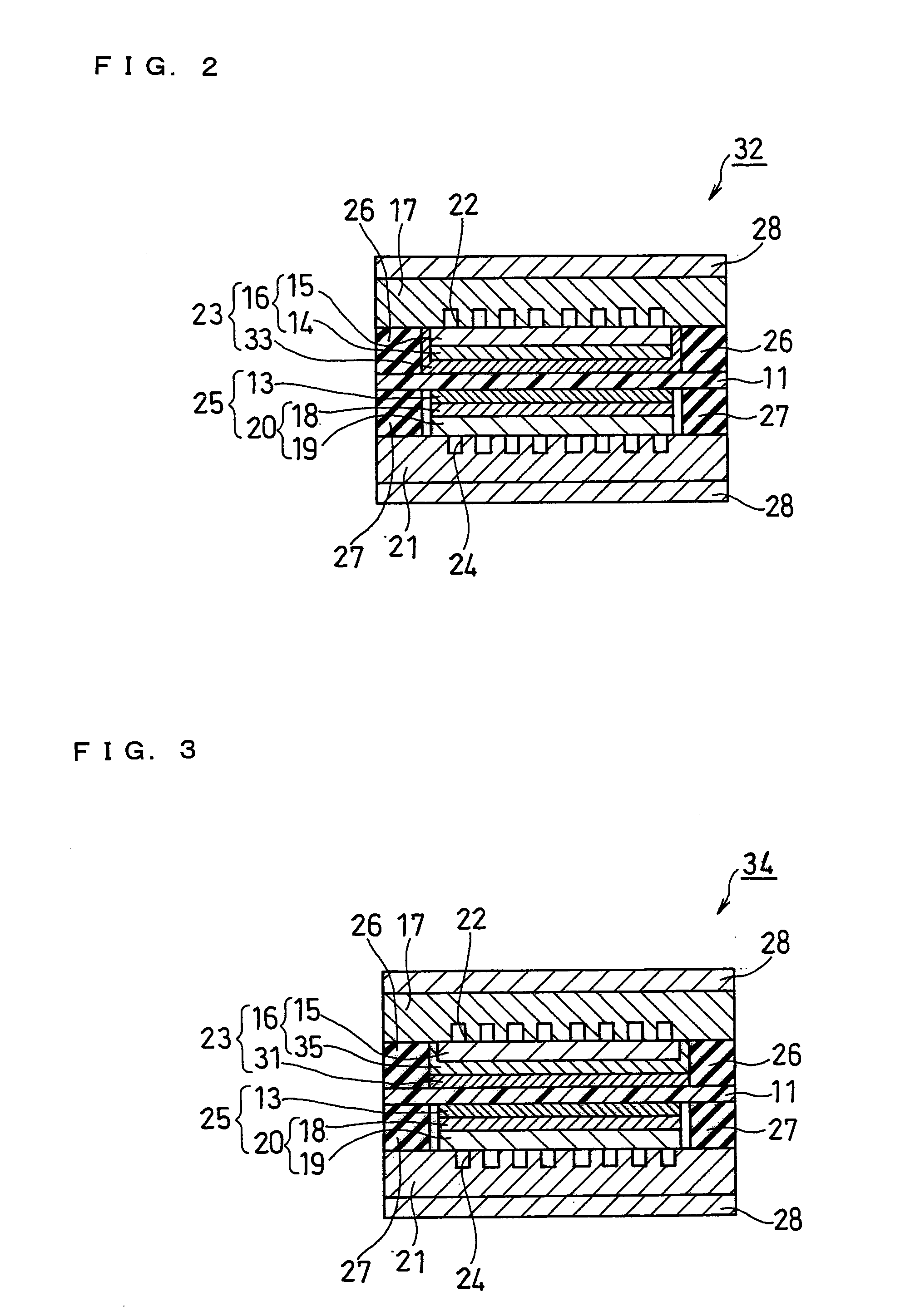Fuel cell
a fuel cell and direct oxidation technology, applied in the direction of fuel cells, solid electrolyte fuel cells, cell components, etc., can solve the problems of reducing the potential at the cathode, deteriorating the utilization efficiency of fuel, and reducing the power generation voltage, so as to prevent the leakage of fuel, increase the amount of mco, and reduce the catalytic activity
- Summary
- Abstract
- Description
- Claims
- Application Information
AI Technical Summary
Benefits of technology
Problems solved by technology
Method used
Image
Examples
example 1
[0104]As Example 1, the fuel cell according to the first embodiment as described above was fabricated (see FIG. 1).
[0105]For the anode catalyst powder forming the anode catalyst layer 31, a powder comprising conductive carbon particles having an average primary particle size of 30 nm with a platinum-ruthenium alloy (atomic ratio Rt:Ru=1:1) adhering thereto, and containing the platinum-ruthenium alloy in a ratio of 50% by weight was used. For the cathode catalyst powder forming the cathode catalyst layer 13, a powder comprising conductive carbon particles having an average primary particle size of 30 nm with platinum adhering thereto, and containing the platinum in a ratio of 50% by weight was used. For the polymer electrolyte membrane 11, a 178-μm-thick fluorine-based polymer membrane (a film made of a base of a perfluorosulfonic acid / polytetrafluoroethylene copolymer (H+ type), product name: “Nafion (registered trademark) 117”, available from E.I. du Pont de Nemours and Company) wa...
example 2
[0117]As Example 2, the fuel cell according to the second embodiment as described above was fabricated (see FIG. 2).
[0118]The anode diffusion layer 16 was produced in the same manner as in Example 1 and cut into a 60 mm square. Subsequently, an ink for forming an anode catalyst layer prepared in the same manner as in Example 1 was applied onto the surface of the anode diffusion layer 16 in the anode water-repellent layer 14 side by a spray method. In this process, the ink was applied onto the anode diffusion layer 16 with the end surface being left unprotected by masking or the like. By doing this, the ink for forming an anode catalyst layer was also adhered onto the end surface of the anode diffusion layer 16. In other words, the anode catalyst layer 33 was formed not only on the surface of the anode diffusion layer 16 in the anode water-repellent layer 14 side but also on the end surface thereof. Further, the entire end surface of the anode diffusion layer 16 was covered with the ...
example 3
[0120]As Example 3, the fuel cell according to the third embodiment as described above was fabricated (see FIG. 3).
[0121]The anode porous substrate 15 was produced in the same manner as in Example 1 and cut into a 60 mm square. Subsequently, an ink for forming an anode water-repellent layer was applied onto the surface of the anode porous substrate 15 by a spray method. In this process, the ink was applied onto the anode porous substrate 15 with the end surface being left unprotected by masking or the like. By doing this, the ink for forming an anode water-repellent layer was also adhered onto the end surface of the anode porous substrate 15. In other words, the anode water-repellent layer 35 was formed not only on the surface of the anode porous substrate 15 in the anode catalyst layer 33 side but also on the end surface thereof. Further, the entire end surface of the anode porous substrate 15 was covered with the anode water-repellent layer 35.
[0122]A unit cell of a fuel cell (DMF...
PUM
| Property | Measurement | Unit |
|---|---|---|
| hydrogen ion conductivity | aaaaa | aaaaa |
| thickness | aaaaa | aaaaa |
| area | aaaaa | aaaaa |
Abstract
Description
Claims
Application Information
 Login to View More
Login to View More - R&D
- Intellectual Property
- Life Sciences
- Materials
- Tech Scout
- Unparalleled Data Quality
- Higher Quality Content
- 60% Fewer Hallucinations
Browse by: Latest US Patents, China's latest patents, Technical Efficacy Thesaurus, Application Domain, Technology Topic, Popular Technical Reports.
© 2025 PatSnap. All rights reserved.Legal|Privacy policy|Modern Slavery Act Transparency Statement|Sitemap|About US| Contact US: help@patsnap.com



